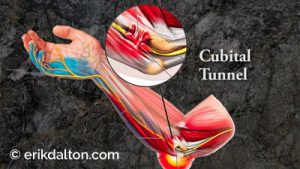From Dynamic Lower Body course

Pelvic floor muscles such as levator ani, coccygeus and obturator internus attach to the front, back and sides of the pelvis and sacrum and form the bottom of the core. These muscles must be able to contract to maintain continence, and to relax allowing for urination and bowel movements, and in women, sexual intercourse.

Resembling a hammock or a sling, this small ensemble of muscles and fascia support the bladder, uterus, prostate and rectum. Evaluation of the pelvic floor complex must include restoring mobility of the surrounding joints to rule out protective muscle guarding due to misalignment. Special emphasis should be placed on the lumbosacral, sacroiliac, sacrococcygeal and pubic symphysis joints and their muscular attachments. Unilateral adductor hypertonicity is an oft-overlooked culprit in pelvic floor disorders. As the pudendal nerve and its branches, travel from the sacrum through the pelvic floor to innervate the vaginal, penile and rectal areas, they can become entrapped and in time, painful. In this Technique Tuesday video taken from my Lower Body home-study course, I offer a simple approach for dealing with pelvic floor hypertonicity and protective guarding.
Working through the adductors to influence the pelvic floor:
- With client left sidelying, therapist passively flexes client’s top leg keeping bottom leg extended
- Therapist’s forearm gently sinks into adductors above knee and slowly proceeds headward using graded exposure stretching
- Therapist’s forearm stops on third pass up the leg and applies direct sustained pressure on adductor attachments at the pubis ramus
- Client is asked to dorsi and plantar-flex her ankle or perform slow pelvic tilts while therapist’s forearm pins the tissue at the pubic ramus
- Reposition forearm if sharp pudendal nerve pain is felt
- Retest for improved pelvic floor function
On sale this week only!
Save 25% off the Treating Trapped Nerves course!
NEW enhanced video USB Format!
Equip yourself with a powerhouse of skills for relieving painfully compressed nerves. Relieve pain caused by mechanical entrapment in the neck, thoracic outlet, sacroiliac, and other regions. Save 25% this week only. Offer expires midnight Monday, October 21st!
Click here for more information and to purchase the course for 16 CE hours and a certificate of completion to display in your office.
BONUS: Order the home study version and get access to the eCourse for free!






